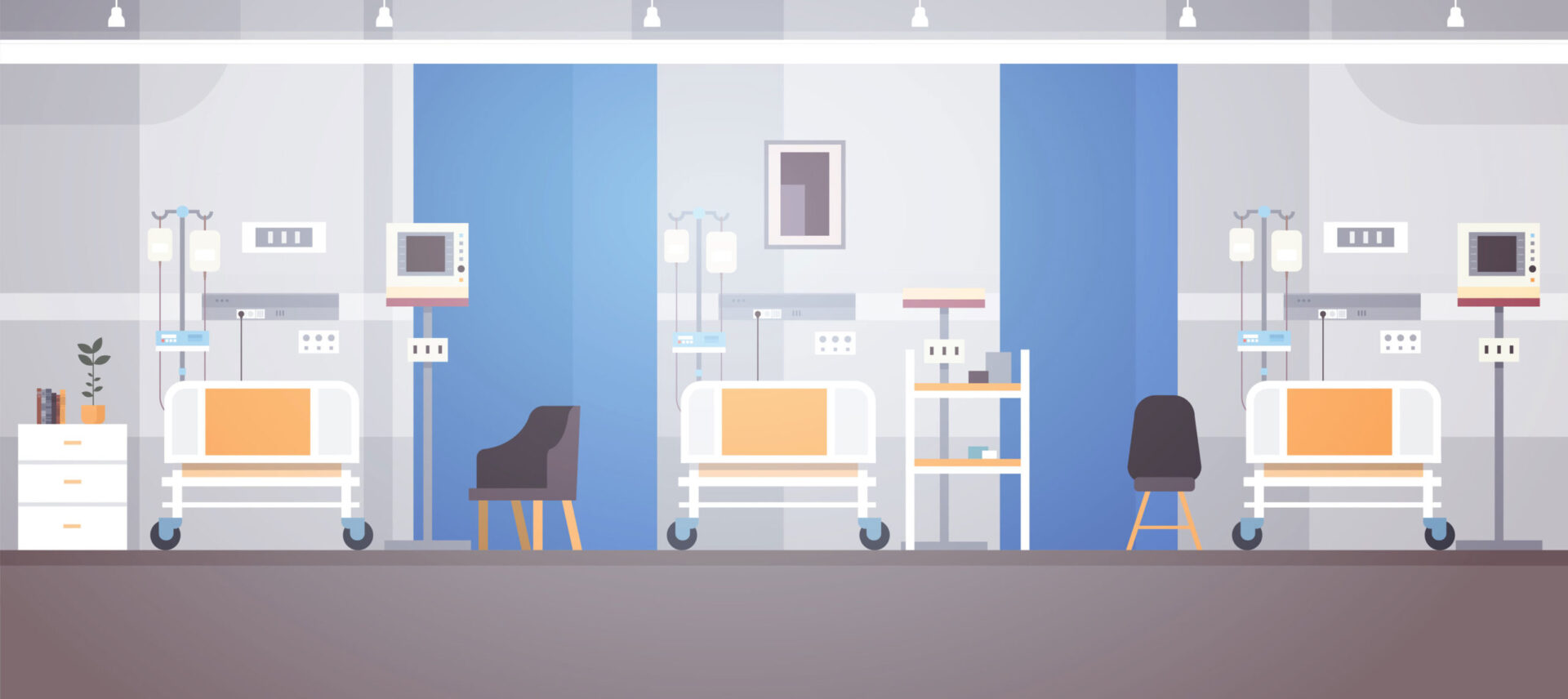
Article
Medtech Design for Ambulatory Surgical Centers
Outpatient surgeries are moving to ambulatory surgical centers. Medtech teams need to evolve their product strategies to meet the demands of this rapidly expanding market.
Thanks to innovation in surgical procedures and recovery techniques, post-operative stays in the hospital are a thing of the past. Operations traditionally completed in hospitals are now routinely carried out in the remodeled RadioShacks of local strip malls. Only now, instead of shopping for a new cell phone and a pack of batteries, patients can swing by for a total hip replacement. This surging demand for convenience, coupled with technological advancement, has altered the healthcare landscape and brought about a rise in ambulatory surgical centers (ASCs).
A spectrum of procedures, from Orthopedic to Cardiovascular, are transitioning from hospitals to ASCs at a rate of 5% per year. Your competitor medical device companies are adapting to new business models and developing innovative, cost competitive products to address this trend.
To stay competitive, your product development team must adapt to the needs of the ASC: delivering the same state-of-the-art care as hospitals, but with greater efficiency and lower overhead.
Hospitals must support many diverse procedures
Unlike ASCs, hospitals support many different procedures and specialties. Although surgeons operate within their individual expertise, support staff are moved around the hospital daily. For example, a scrub tech who typically supports cardiovascular procedures may suddenly be asked to fill in on an orthopedic operation. The tools and techniques vary significantly between these types of procedures like these, so it’s critical that staff can ramp up quickly and get to work.
Under these circumstances, it is essential to design medical devices with apparent usability. Product development teams must assume the user has never seen the product before and build in features to ensure proper use. Many teams resort to redundancy to help with this. It’s not uncommon to see kits packaged with different tools intended for similar jobs. For example, when placing pedicle screws in spinal cases, a compressor and distractor will both be provided – a separate instrument for each specific step of the workflow. It’s easy to use, but far from economical.
ASCs focus on a few procedures with maximum efficiency
To make their businesses more viable, ASCs focus on efficiency. They only schedule certain high-volume surgeries and have a dedicated team trained to perform them. Scrub techs carry out relatively few types of procedures and become experts with the products after repeated practice. In essence, the use-case for devices is much different in the ASC environment; prioritizing simplicity over intuitive usability. Many functions and usability features that would be required in a hospital setting are considered nice-to-have or unneeded in the ASC.
ASCs also have smaller and fewer operating rooms and the turnaround time between procedures needs to be quick. Staff prefer procedure kits with tools consolidated into a single sterile package versus having to open multiple sterile packages. Bundling items together allows them to set up rooms more quickly and reduces the number of sterile packages that are needed to be held in inventory or opened before a case. ASCs would even prefer a disposable sheath or barrier if it could eliminate the need to clean and sterilize a product after every procedure.
With a trimmed-down offering of procedures in the ASC, “just-in-case” products and tools are never used. For example, about 20% of the instruments in a kit are necessary to perform a routine total knee procedure. If you eliminate the other 80%, not only do you save precious OR space, but you also save valuable resources that would be spent decontaminating and sterilizing the unused instruments. Providing only the necessary tools helps ASCs drive their costs down and profitability up.
Design your products for the priorities of the ASC to succeed
As you revamp your portfolio, look for opportunities to improve surgical workflow, reduce inventory, and streamline product offerings. Design minimum viable products that will deliver the same surgical outcomes without the extra baggage. Avoid designing for “what if” scenarios and prioritize your offerings to meet the needs of the standard procedure.
This is clearly a daunting task, and requires a different approach to developing your products. At M3 Design, we use a stakeholder centered design process to investigate and integrate the needs of both hospitals and ASCs. We identify the specific product needs of different stakeholder groups using targeted research and strategically distill the results into success criteria. This approach delivers a systematic framework that we use to evaluate feature sets and informs the optimal go to market strategy.
ASCs must provide the same standard of care as hospitals at a lower cost
Your biggest challenge is how to provide innovative solutions at the lower cost the ASCs require. Since ASCs are smaller and geographically dispersed, your cost of sales and distribution is going to increase. Yet ASCs still expect you to provide lower-cost products. The primary reason for this is that they receive less reimbursement from insurers for a given procedure than hospitals. Addressing their sensitivity to cost while maintaining your profit margins requires adapting to the ASCs unique market needs if you want to capture their business.
ASCs purchase fewer pieces of capital equipment and have dedicated procedure rooms to lower their overhead. They prefer to use general surgical products suitable for all procedures instead of specialized equipment to streamline disposable inventory management and reduce overall cost.
Unlike hospital environments, physicians in ASCs have more purchasing power over the medical devices and equipment they use. If they can get the same surgical outcome from a 15% cheaper option, they will sacrifice usability and bells and whistles. This does not mean they will accept older generation products — they demand the same quality product, just at a lower price.
ASCs further lower their operating costs with credits they receive from reprocessors for returned device inventory. And for many clinicians, reprocessed products are an acceptable lower-cost alternative as long as the core-functionality is unaffected. This presents a unique opportunity for medical device manufacturers to create new revenue streams. For one reprocessor in particular, M3 Design developed a disposable torque wrench for a system of reprocessed products. The new torque wrench provided better usability and ergonomics than the OEM device without substantially impacting margins. Not only was the reprocessor able to provide competitive devices at a lower cost, but they were able to add value for the end-user.
You need to be open to new business models if you want to serve the needs of ASCs. For example, some medical device companies lower their cost of sales by providing virtual OR reps and outsourcing their inventory logistics and management to third parties. If you want to thrive in the new era of ASCs, you must focus on developing new business models and adjacent service offerings, or the outlook is grim.
Change the way you do business if you want to serve the ASC
As outpatient surgeries increase, so will your incentive to serve the ASCs that provide them. The days of only selling into large hospital systems that require multiple product lines to serve every possible pathology are gone. You and your team must focus on flexibility if you want to compete in such a rapidly expanding market. Consider creative business models and ways to develop innovative “good enough” products. Shift the mindset of your R&D, marketing, and sales teams, or even hire a specialized team if you have to. The challenges of serving the unique demands of Ambulatory Surgical Centers are many, but the rewards are as well.





